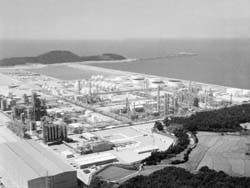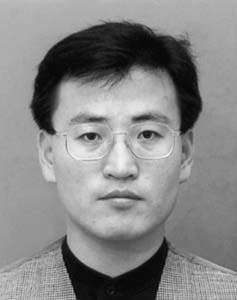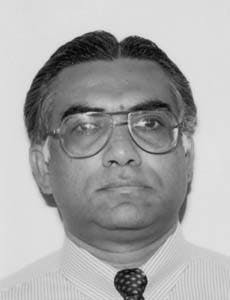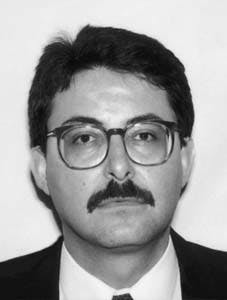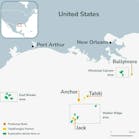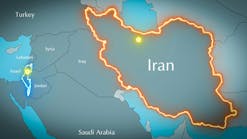Seongkyu Yoon
Hyundai Petrochemical Co. Ltd.
Daesan, South KoreaSurajit Dasgupta, Gerardo Mijares
M.W. Kellogg Co.
Houston
Real-time optimization and advanced process control systems increased profits almost 12% at Hyundai Petrochemical Co.'s 350,000 metric ton/year ethylene plant in Daesan, South Korea.
Real-time optimization (RTO) of Hyundai Petrochemical Co. Ltd.'s olefins complex at Daesan, South Korea, increased ethylene capacity 4% and revenues 12%, and decreased feedstock and energy usage 2.5%, with no changes in operating conditions.
The project comprised RTO and advanced process control (APC) systems for the 350,000 metric ton/year (mty) ethylene plant.
A similar system was implemented in the hydrotreating and benzene recovery sections of the plant's pyrolysis-gasoline treating unit.
The Daesan complex
Hyundai Petrochemical started up its olefins complex on Korea's western seaboard in late 1991. The Daesan complex comprises 10 plants, including naphtha cracking, monomer, and polymer units.
Additional support facilities include:
- Industrial water treatment plants
- Electric generators
- Automatic storage systems
- A jetty with capacity to berth 100,000 dwt and 10,000 dwt ships simultaneously
- A research and development center.
Central to the complex is the ethylene plant, designed by M.W. Kellogg Co. and Hyundai Engineering Co. Its main products are polymer-grade ethylene (99.95% purity), and propylene of 99.5% purity.
Ethylene plant by-products include: hydrogen, methane, mixed C4s, raw pyrolysis gasoline, and pyrolysis fuel oil. Most of these products are consumed in downstream units.
The plant's capacity is 350,000 mty ethylene and 175,000 mty propylene, based on 7,200 operating hr/year. Since start-up, naphtha has been the primary feed, but the plant was designed with flexibility to process C3/C4 (LPG) and gas oil feeds.
RTO system structure
The APC systems for both the olefins and pyrolysis gasoline plants were implemented in November 1994. Both plants are equipped with Honeywell TDC 3000 distributed control systems (DCSs) for process monitoring and regulation. The DCS for the ethylene plant monitors about 2,200 measurements, 550 of which are part of the regulatory control system.
The APC system was implemented in a MicroVax 3800 computer, interfaced to the DCS through a commercial supervisory control and data acquisition (scada) software package. The APC downloads set points to more than 75 controllers in the regulatory control system, thus relieving the operators of a burdensome task.
The APC system uses M.W. Kellogg's Linear Model Based Control (LMBC) technology, and controls about 30 plant variables. When the RTO system is operating in an on-line, closed-loop fashion, the targets for these variables are downloaded to the APC system from the RTO.
Fig. 1 [31457 bytes] is a diagram of the RTO, APC, and DCS configuration. Fig. 2 [25249 bytes] illustrates the hardware and software layers, and the overall file-transfer and communication logic, for the systems.
The RTO system provides the bridge between long-term planning issues, such as plant scheduling, and short or intermediate-term concerns, such as feedstock assignments, product quality, efficient operation, and safety. The system determines the best short-term operation policy, in real time, based on product quality requirements, equipment performance limitations, market economics, and process operations.
The system gives the engineer a choice of several objective functions or modes, including: maximum gross profit, maximum ethylene production, maximum propylene production, and maximum olefins production. Each of these choices can be associated with a fixed or independent feed rate.
The system can be run in on-line or off-line mode. When off-line, the system can be used to perform feasibility studies, predict yields, estimate optimum operating conditions for different feedstocks, or perform sensitivity analyses based on feed properties and operating conditions.
The RTO system performs a sequence of functions, including: data gathering and validation, steady-state detection, data reconciliation, process model updating, and optimization.1
The first three of these functions is designed primarily to check whether a set of data is consistent and properly integrated for the subsequent tasks of model-parameter updating (MPU) and optimization. Once the set of data satisfies a specified criterion, parameter updating and optimization are executed using a sequential quadratic programming (SQP) simulation and optimization system.
After successful completion of all system tasks, the results of the optimization are implemented through the APC and regulatory control systems. The complete optimization cycle generally is executed every 4 hr.
It is important to point out that successful RTO requires a well-tuned APC system to stabilize plant operation and maintain the optimum operating conditions found by the RTO system.
System scope
The RTO system can be described in terms of its components and its functionality. Fig. 3 [26053 bytes] shows the sequence of RTO tasks and components.
Components
The system is divided into five components and five functions. The system components are:
- Plant model. The plant model used for the RTO system is one of the keys to its success. Model oversimplification commonly results in nonconvergence, or nonoptimum solutions, and commissioning delays.
The system models are based on fundamental chemical engineering principles. They include a yield model, based on Kellogg's pilot plant and operating yield data base, and a library of rigorous unit-operations models for compression, refrigeration, tray-by-tray distillation, two and three-phase flash, heat exchange, etc.
The process model must be accurate enough to predict process interactions and constraints. Fundamental chemical engineering models meet these requirements best.
Optimization systems with rigorous chemical engineering models traditionally have used a sequential, modular modeling approach, making them difficult to apply for RTO because of excessive calculation requirements resulting from their use of nested convergence schemes.
By contrast, the models for Hyundai's two RTO systems use an open-equation approach, in which the model equations are expressed in what is called "residual" form. This open-equation modeling concept has been described in detail.2 3
Rigorous modeling using this approach has several benefits. It takes full advantage of the solution algorithm's strengths, and it is easily maintainable because the convergence scheme is independent of the model structure. In addition, its versatility allows the model to be used to perform simulations, data reconciliation, parameter updating, and optimization functions.
The models were developed using a generic approach to ensure ease of maintenance and reusability. This enabled major model modifications to be implemented in very little time.
As commissioned, the ethylene plant model comprises: 64,000 equations, 220 modules, 45 independent variables, and 72 design cases. An overview of the scope of the cracker RTO, in terms of the major units modeled, is shown in Fig. 4 [27645 bytes].
The model encompasses: the Millisecond furnaces, pyrolysis fractionator, process gas compressor, demethanizer chill-down train, demethanizer, de-ethanizer, C2 splitter, C3 splitter, depropanizer, debutanizer, and ethylene and propylene refrigeration systems. The acetylene and methyl acetylene/propadiene (MAPD) converters and the steam system were modeled using a less rigorous approach.
A block diagram of the gasoline hydrogenation and benzene recovery units is shown in Fig. 5 [25106 bytes].
- Solving "engine". Dynamic Optimization Technology Products Inc.'s NOVA SQP engine is used to solve the optimization problem. The engine is independent of the models and can be used to solve simulation, data reconciliation, parameter updating, and optimization problems.
Although NOVA can handle closed-form routines as part of the plant model, all closed-form routines were converted to open form to decrease solution times. Kellogg's thermodynamic data base functions were used for this conversion.
- Hardware platform. The RTO system was implemented in an IBM RISC/6000 320H computer. This computer is dedicated exclusively to running the RTO. A MicroVax 3800 hosts the APC and scada systems and is used as the front end of the system. As such, it provides the link between the plant and the RTO system. All engineer interface functions and some of the custom logic programming reside in this computer.
The MicroVax 3800 communicates with the plant's DCS through the scada system. The link between the MicroVax and IBM computers is maintained by a vendor-supplied program called KInet, based on Decnet protocol. The scada system data base is used to manage and maintain the flow of information between the RTO, APC, and DCS (Fig. 2 [25249 bytes]).
- Interfaces. The engineer interface is the "window" to the RTO system. The engineer enters the current feedstock properties and economic values through this interface. It also is used to access and customize the progress and output reports for simulation and optimization.
The interface allows the engineer to operate the system in an off-line mode using historical data, manually entered data, or both. Fig. 6 [27504 bytes]and Fig. 7 [24144 bytes] show typical top-level screen displays in, respectively, the user interface and data entry sections.
All operator interaction with the system takes place through the DCS consoles. Hyundai's operator interface includes in the DCS sets of "dummy" controllers, which are updated with RTO-calculated set points 15 min before the actual download. This allows the operator to examine the RTO results and reject the suggested set points, if necessary, or allow the RTO to implement them automatically after the 15-min examination period.
The interface to the APC system comprises the transference of set points from the RTO to the corresponding APC applications. Higher-level systems, such as planning and scheduling, are integrated in the RTO through the specification of constraints and economic penalties in the RTO, and through calculation of variable sensitivities.
- Custom programs or logic. The system required the development and implementation of several customized functions particular to the Daesan units and their operation. These functions were designed mainly to analyze the quality of data, perform formal data reconciliation, and update variable definitions based on data errors, availability, or both.
Functions
The five system functions are:
- Data gathering and gross error detection. The quality of the data required by the RTO is affected by noise, dynamics, and instrument error.
Because data quality are critical to RTO performance, several data validation and error detection steps are performed before proceeding with any further system functions. These steps include checking the data against high and low limits, rate of change, and drift. Generally, these functions are done at the DCS and scada-system levels.
- Steady-state detection. The system models are steady-state models and, as such, require steady-state data for their operation.
Because process data are dynamic, it is necessary to find a period of time during which the data do not violate a specified steady-state criterion. The purpose of the steady-state detection function is to ensure that the data collected for execution of any subsequent system tasks meet this criterion.
About 30 variables are chosen from different sections of the plant. The variables are chosen to closely reflect plant dynamics. Variable selection heavily involved Hyundai Petrochemical personnel. The workers' input was particularly valuable in establishing confidence factors and standard deviations for the measurements used by the system.
Several statistical tests are conducted on the data. If all variables meet predetermined criteria, the plant is considered at steady state.
- Filtering and data reconciliation. Data reconciliation is a prerequisite to the model parameter-updating procedure. Overall, this step includes data filtering, consistency checking, and reconciliation. Filtering techniques are used to eliminate or reduce noise in the measurements used by the parameter-updating function.
About 300 measurements are selected for use in the parameter-updating step. The variables are averaged over a specified filtering window and any data spikes detected are removed. The system allows the user to alter the size of the filtering window and the sampling frequency.
After the data are filtered, data consistency checks are performed using custom heuristics. The checks mainly comprise detecting temperature crossings and material-balance inconsistencies. ("Crossings" refers to a phenomenon in heat-exchanger systems characterized by plant measurements indicating the cold stream to be hotter than the hot stream, as a result of measurement errors.)
Because the open-equation methodology is flexible in its handling of variables, situations in which inconsistencies arise are handled by automatically changing the specification of the problem variable affected by the inconsistency.
So far, more than 50 checks are used to test data consistency. As plant operation has evolved, this logic has been modified to reflect changes in plant operation. This function also includes logic to prevent runs with no chance of success: such as when key data are unavailable or cannot be reconciled.
The final step in this function involves reconciling feed and product flows to ensure overall material balance.
- Model parameter updating. MPU is performed before optimization, to take into account parameter variation caused by factors unaccounted for in the models. Examples of such parameters are: tray efficiencies of distillation columns, heat-transfer coefficients of exchangers, and polytropic efficiencies of compressors (Table 1 [41807 bytes]).
The specification of the parameter-updating problem is set up such that the variables read from the plant are defined as fixed variables, and the parameters to be updated are defined as dependent variables. The problem is solved using NOVA with no degrees of freedom.
- Optimization. The optimization problem for the ethylene unit has about 30 degrees of freedom. The downloaded set points comprise furnace severities and feed rates, and impurity specifications for each column. The process operating goal is expressed by the objective function. The general form of this function, with the option to maximize gross profit or production, is:
OBJFCN = P - F + Ug - Uc - D
where: OBJFCN = objective function, P = value of products, F = cost of feedstocks, Ug = value of utilities generated, Uc = cost of utilities used, and D = run-length debit.
The on-line system has been configured to operate in two basic modes. In the independent-feed-rate mode, the system provides feed rates for each furnace and the severity required to achieve the desired production rates. This mode is useful when maximizing gross profit. In the fixed-feed-rate mode, the system provides the severity for the most profitable operation based on a given feed rate. This mode is used when plant efficiency is most important.
These two modes provide the key constraints for the optimizer. In both modes, the engineer can select alternate forms of the objective functions based on market situations. As stated earlier, these alternatives include: maximum gross profit, maximum ethylene production, maximum propylene production, and maximum olefins production.
The plant manager and engineers thus can easily select the RTO operating mode that best fits their needs, based on existing market and operating conditions for the complex, by simply choosing the desired action from a series of menu screens.
All downloaded set points are step-bounded with limits defined by the engineers. These limits define the amount of allowable movement for the optimizer, thus ensuring smooth plant operation.
The set points downloaded from the optimizer are written to the dummy DCS controllers for examination and implementation. The system includes the necessary safeguards to ensure that the next optimization cycle will not begin immediately after successful implementation of the optimization process.
Project execution
The APC/RTO project was awarded to Kellogg in March 1990. Commissioning of the APC system was completed in March 1994.
RTO commissioning activities started after the APC system was commissioned. The RTO was operating in closed-loop fashion by November 1994. The RTO project schedule was impacted by a change in system philosophy, however, in the middle of the function-specification phase.
Originally, it was intended that the system use a sequential, modular approach. Because of the advent of open-equation modeling and Hyundai's interest in having state-of-the-art technology, this novel, more-efficient approach was chosen.
The project comprised four phases: function specification, detailed design, implementation, and commissioning. Hyundai engineers actively participated in all phases. During the first three phases, a team of Hyundai engineers resided in Kellogg's offices as part of the project team. During commissioning, two Hyundai engineers were assigned to work full time alongside Kellogg's engineers.
The commissioning phase was further divided into several subphases, including precommissioning. During this subphase, all programming changes made for the purpose of improving on-line performance were reviewed and verified. Changes were made to the system in order to accurately match the operating characteristics of the plant. The system's real-time data base was checked, missing entities were added, and the filtering functions were verified.
All significant operating variables used to constrain the optimizer solution were identified, and their bounds specified, during precommissioning. The types of these bounds include mechanical constraints, process constraints, and "comfort levels" defined by the operators. The comfort levels are step limits on the system. All fixed or constant RTO values were identified. These included pressure drops in exchangers, certain piping, and columns.
After precommissioning, an initial model-parameter updating subphase was performed. This subphase served to find a family of parameter sets to be used later as the starting sets for the parameter-updating function.
Once a sufficient number of MPU runs are conducted, robustness can be checked and the parameters' sensitivities analyzed. Through analysis of the parameter values, one can determine whether changes in the model structure are required.
Once the model parameter sets were obtained, the RTO system was run in an open-loop fashion. The optimization runs were examined for the validity of the targets issued, for acceptance of the targets by operating personnel, and for the system's response to different operating objectives. Any of these examinations may result in changes to the model structure, specifications, or validation logic.
Once the open-loop targets were accepted, the plant was gradually moved toward the targets given by the system. Because these changes to the plant resulted in new operating conditions, model-parameter updating runs were needed to ensure the accuracy of the model.
Once the confidence level in the system solutions reached a high level, the system was changed to closed-loop mode. Continuous observation ensures proper operation and reliable solutions.
Benefits
The APC and RTO systems are increasingly recognized by plant personnel as improving operations through better product quality control, enhanced product recovery, and increased profits.
Important benefits of the APC system result from reduced variability in the system's controlled variables. The APC system enables the operators to run the unit closer to product specification constraints and quality targets, thus reducing product downgrade and increasing recovery of valuable products.
Significant reductions in reflux were achieved for some of the columns in the cold side of the ethylene unit. This translated into savings in heating and condensing media, which, in turn, reduced energy costs.
References
The Authors
Seongkyu Yoon is a process and system engineer at Hyundai Petrochemical Co. Ltd., Daesan, South Korea. He is responsible for implementing computer integrated manufacturing systems, maintaining advanced control applications, and providing technical production support.Yoon has a BS degree from Yonsei University in Seoul and an MS degree from Korea Advanced Institute of Science & Technology, Taejon, Korea, both in chemical engineering.
Surajit Dasgupta is a senior principal engineer with M.W. Kellogg Co., Houston, where his work involves dynamic simulation, operator training simulators, and plant-wide optimization. He has 16 years' experience in simulation and optimization, during which he worked as a senior engineer at Sun Oil Co., Marcus Hook, Pa., specializing in optimization, expert systems, and statistical analysis.Dasgupta also served as deputy director of the University of Houston Energy Laboratory. He has a bachelors degree from the Indian Institute of Technology, Kharagpur, India, and masters and doctorate degrees from Columbia University, all in chemical engineering.
Gerardo Mijares is advanced process control chief technology engineer with M.W. Kellogg. He has been with Kellogg for more than 8 years and leads the company's efforts in the areas of advanced process control, optimization, operating training simulators, and operator advisory systems. Mijares has a BS in chemical engineering from Instituto Tecnologico de Monterrey, and MS and PhD degrees from Texas A&M University. He has published more than 20 works in the areas of advanced process control and optimization.
Copyright 1996 Oil & Gas Journal. All Rights Reserved.
